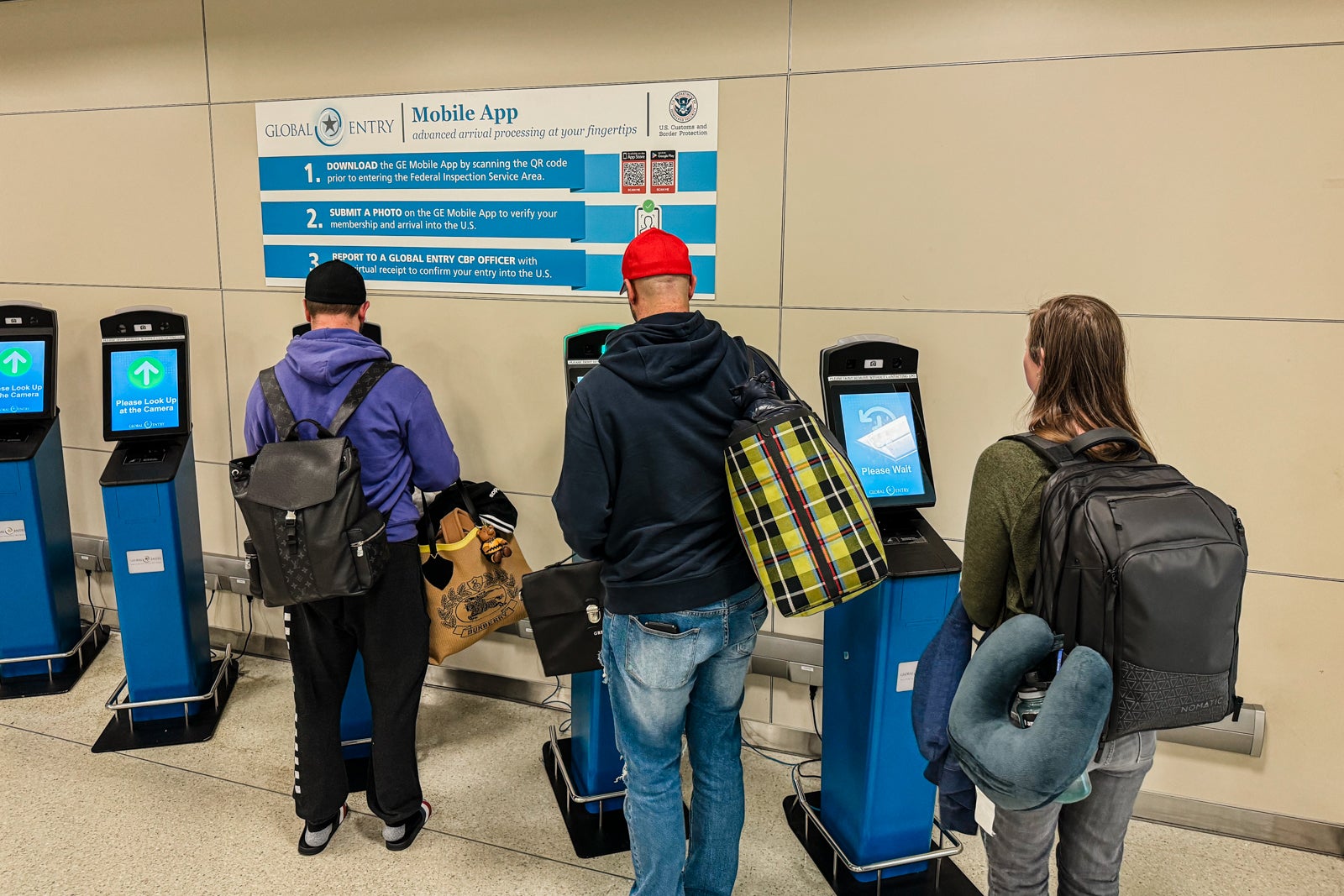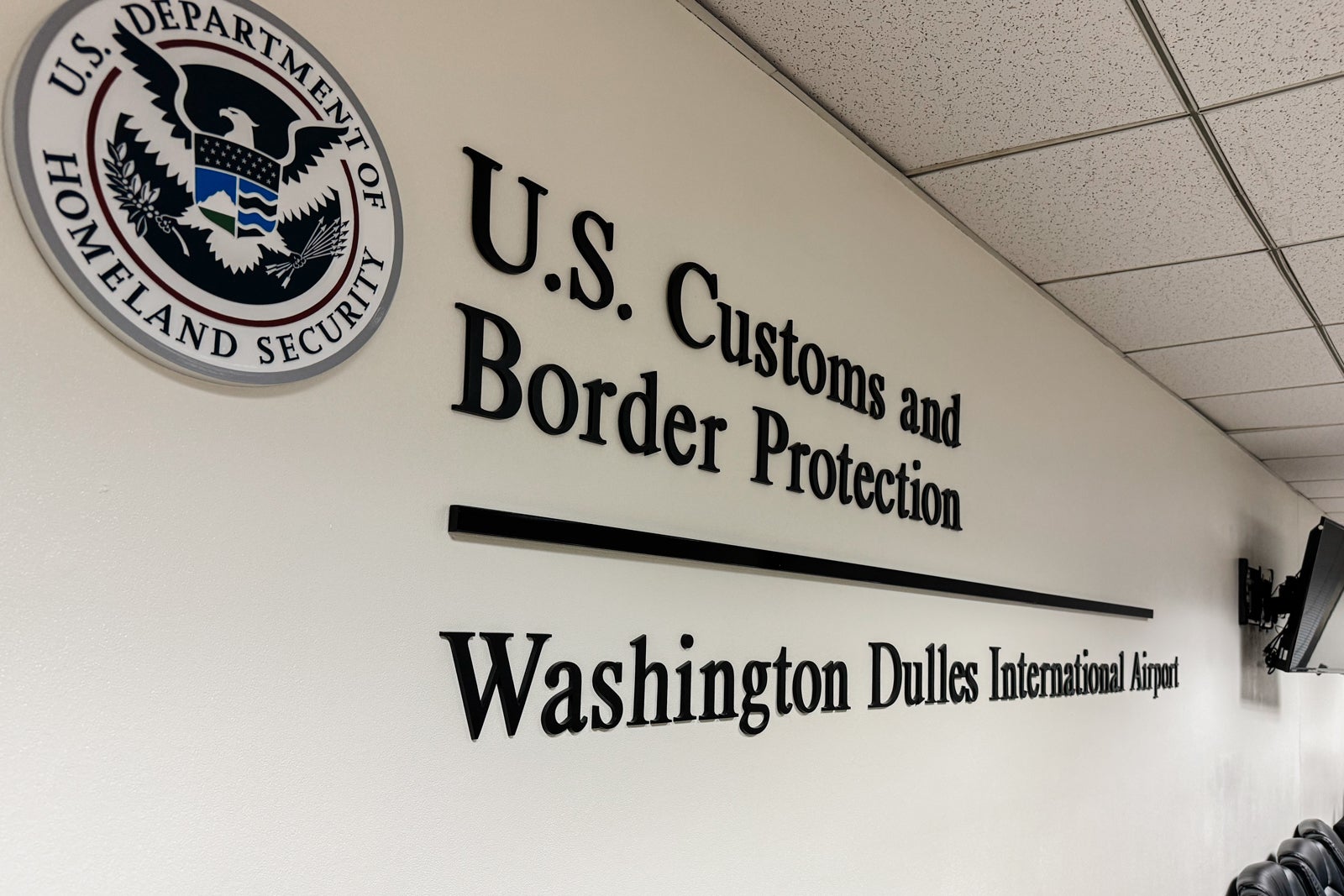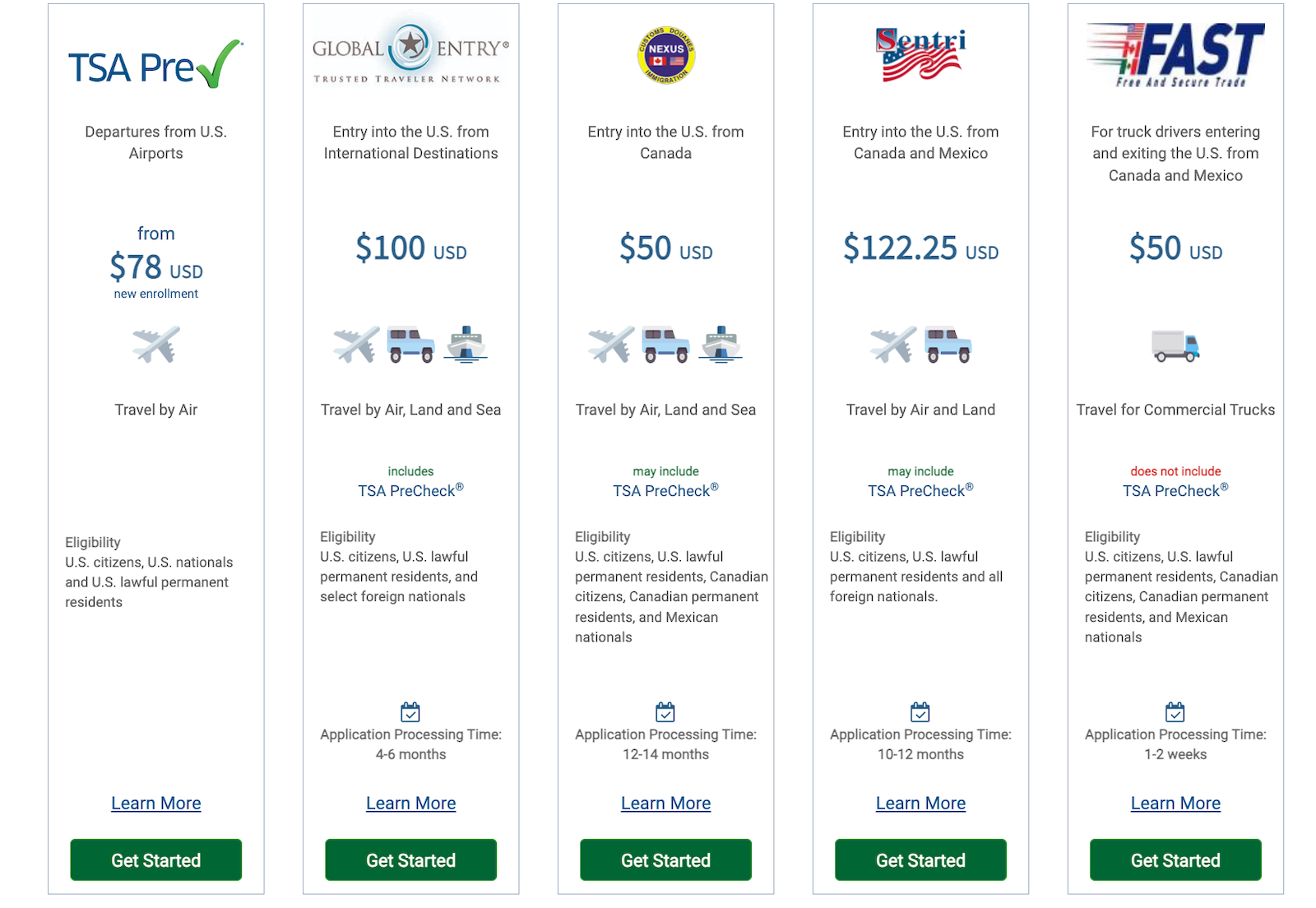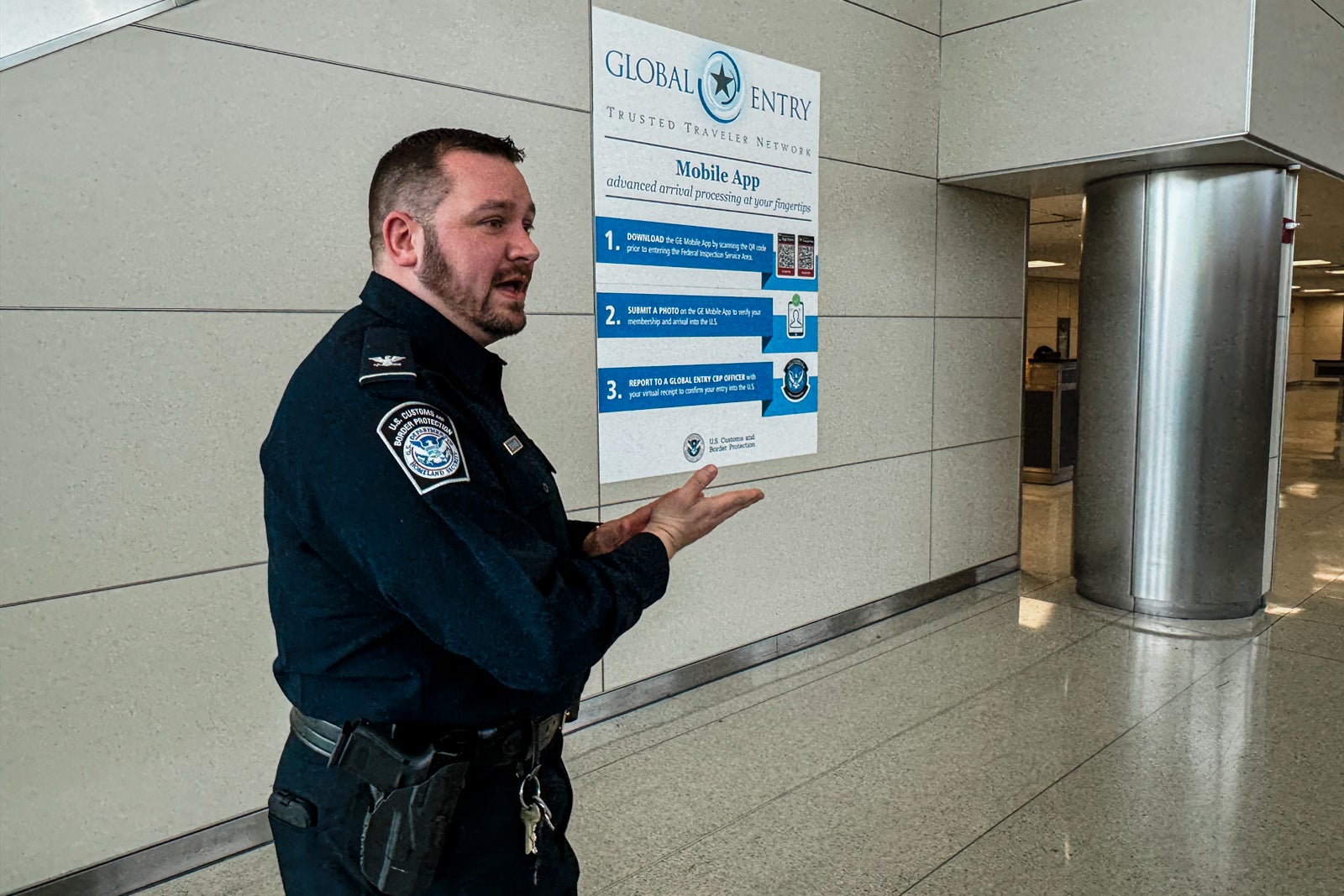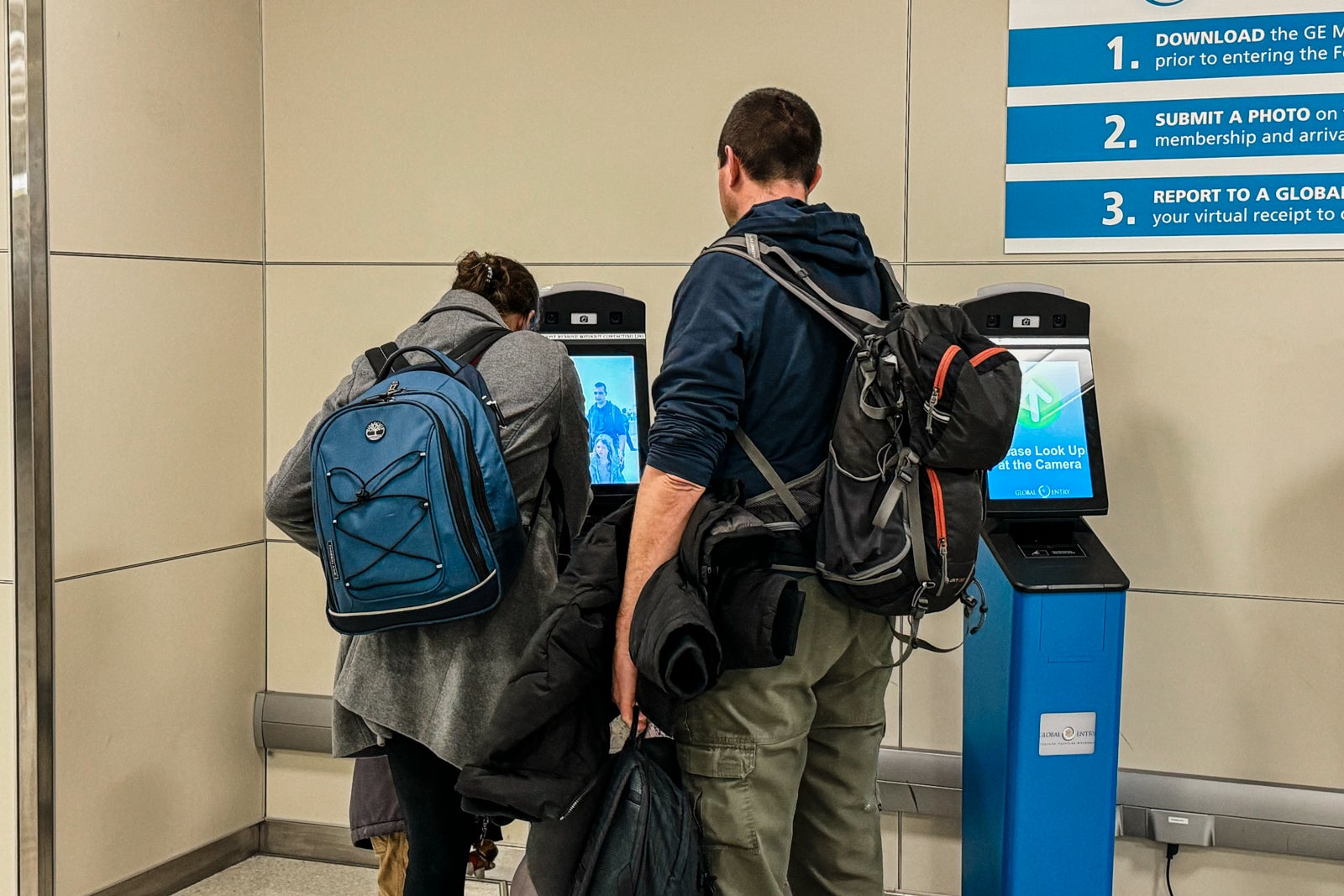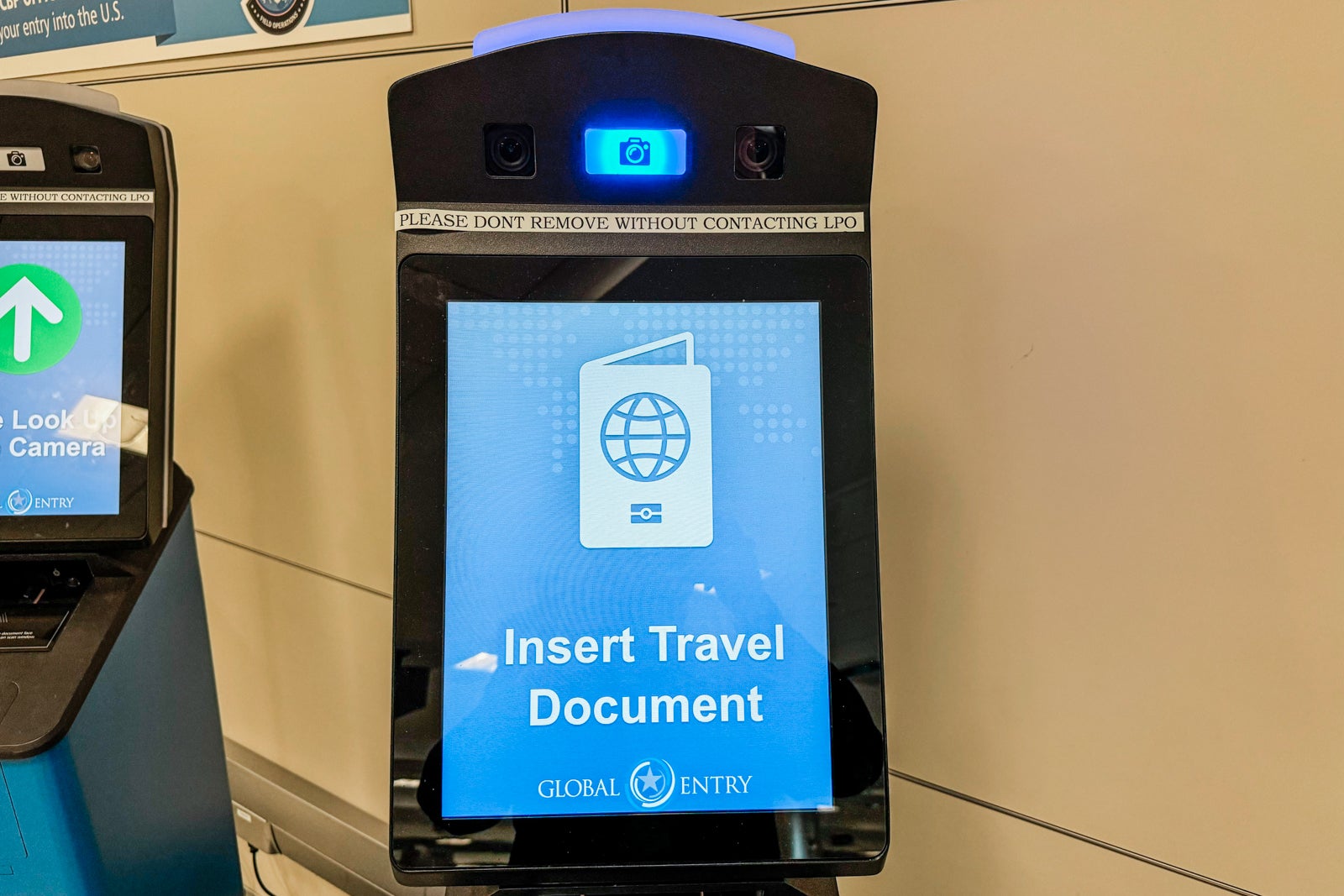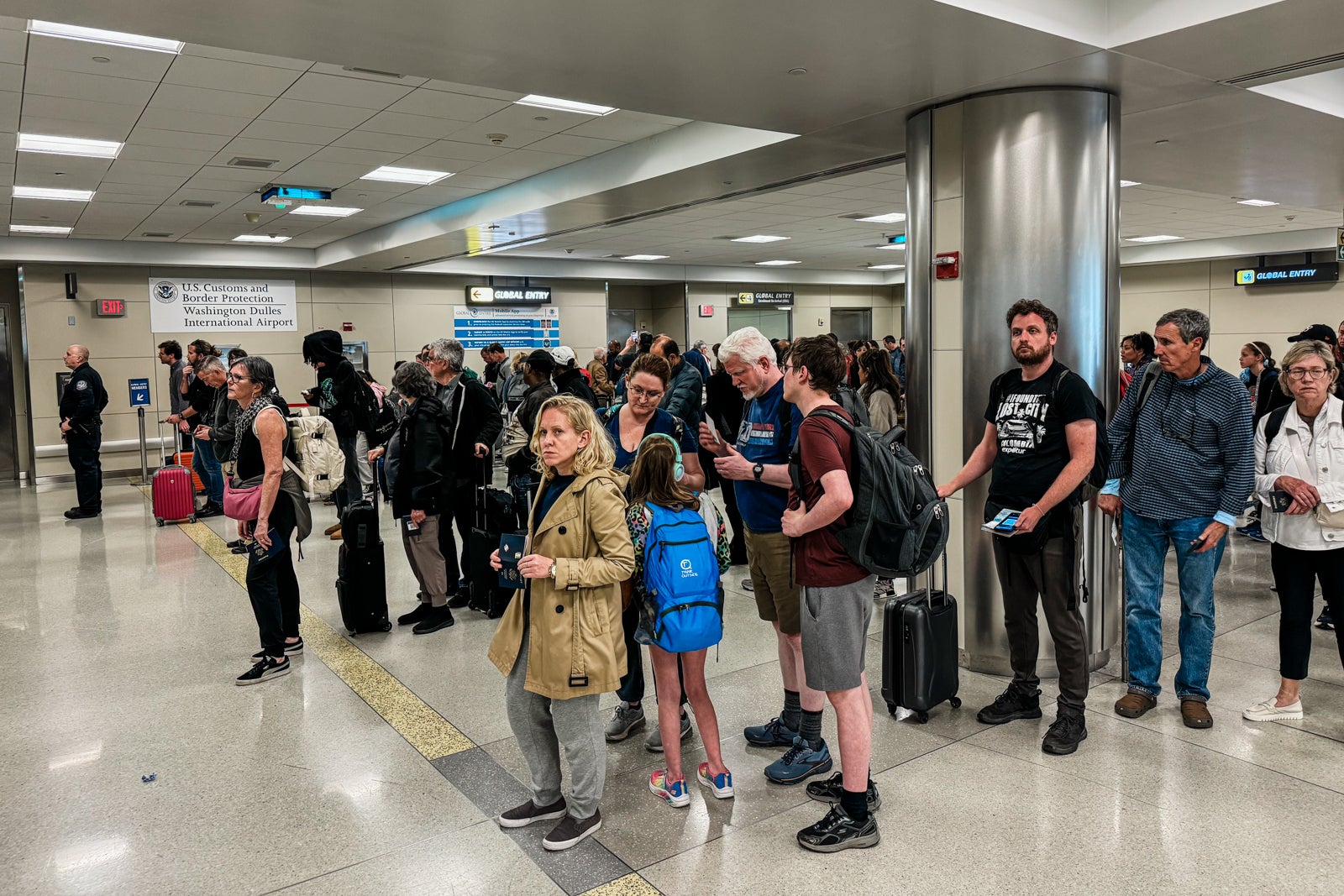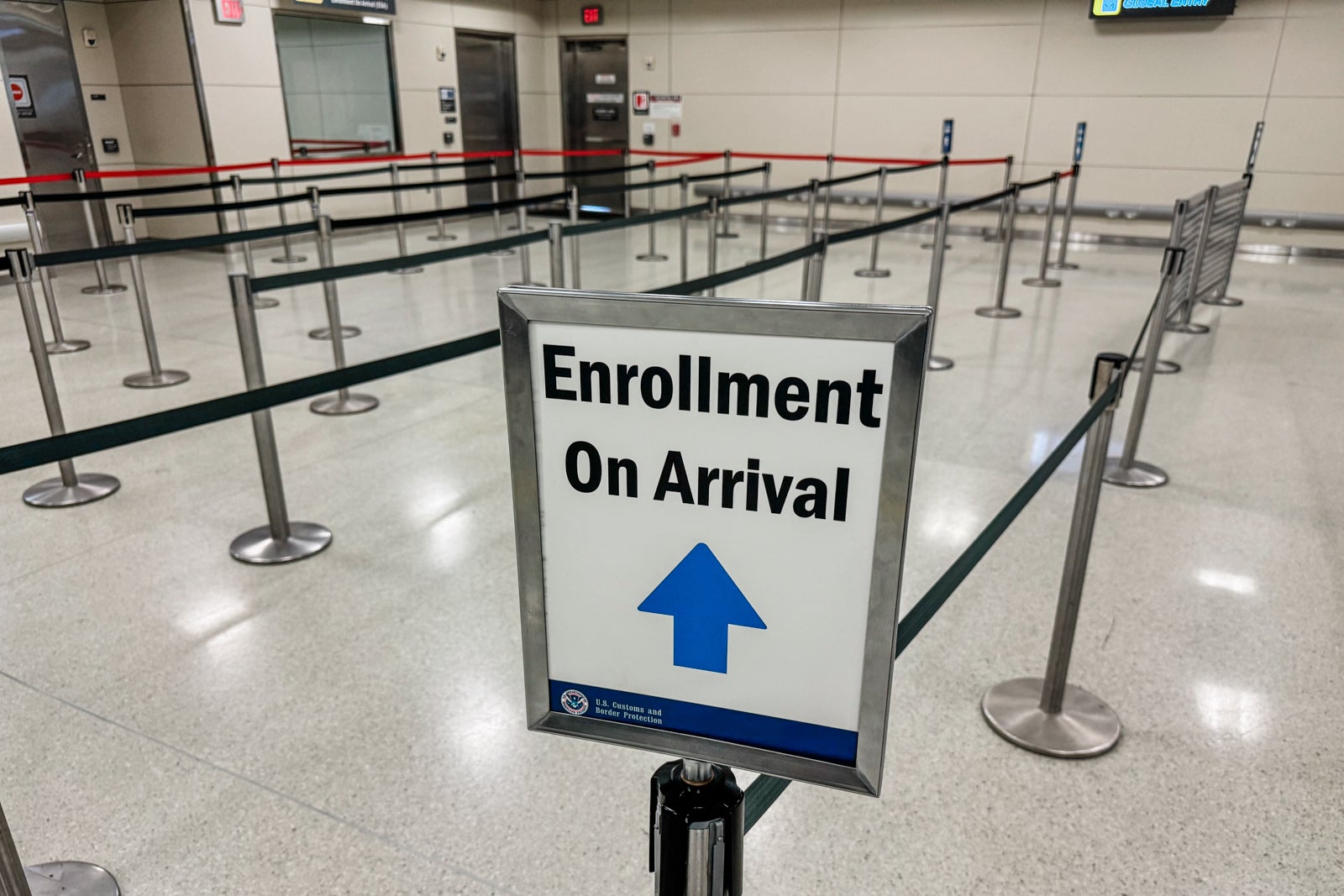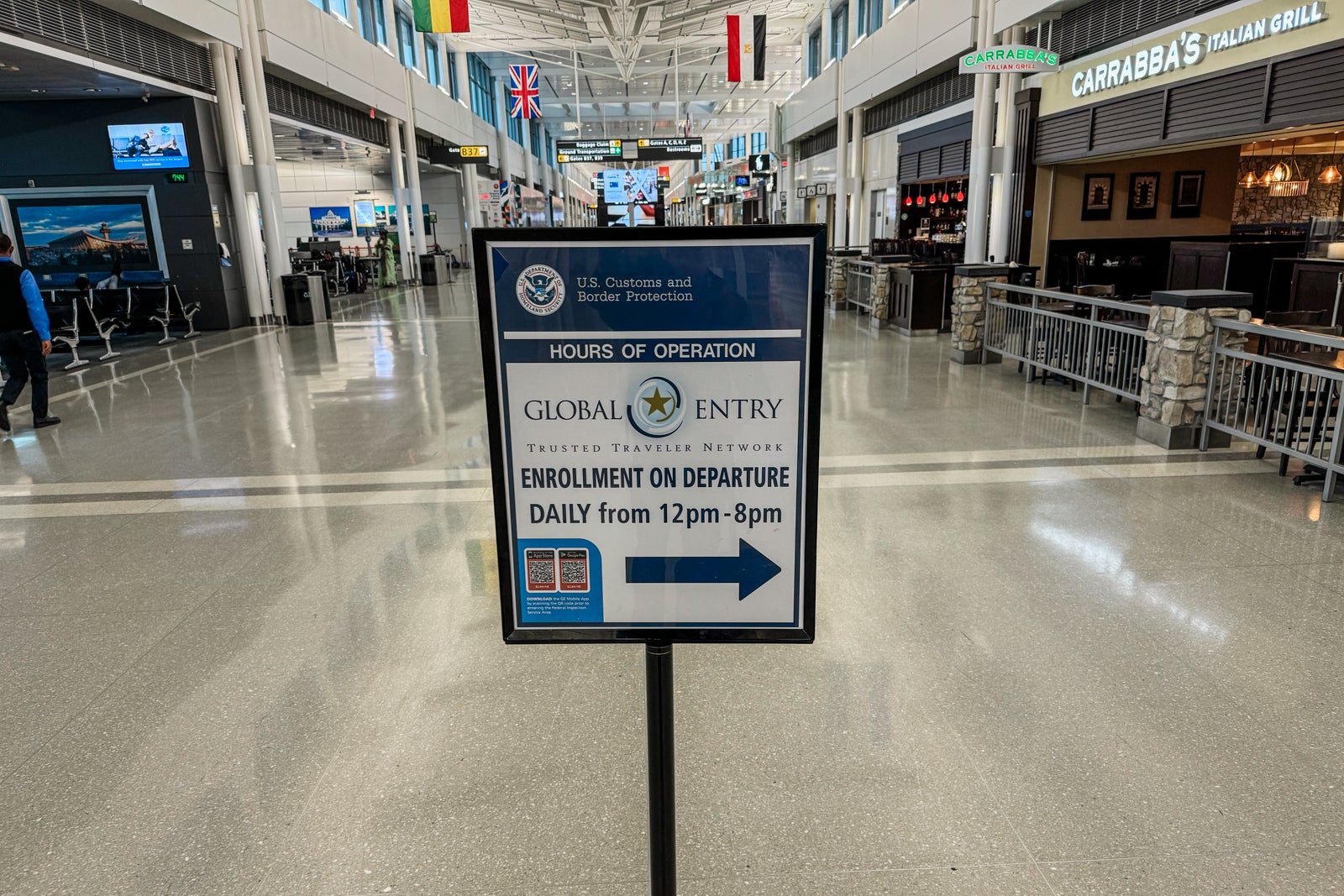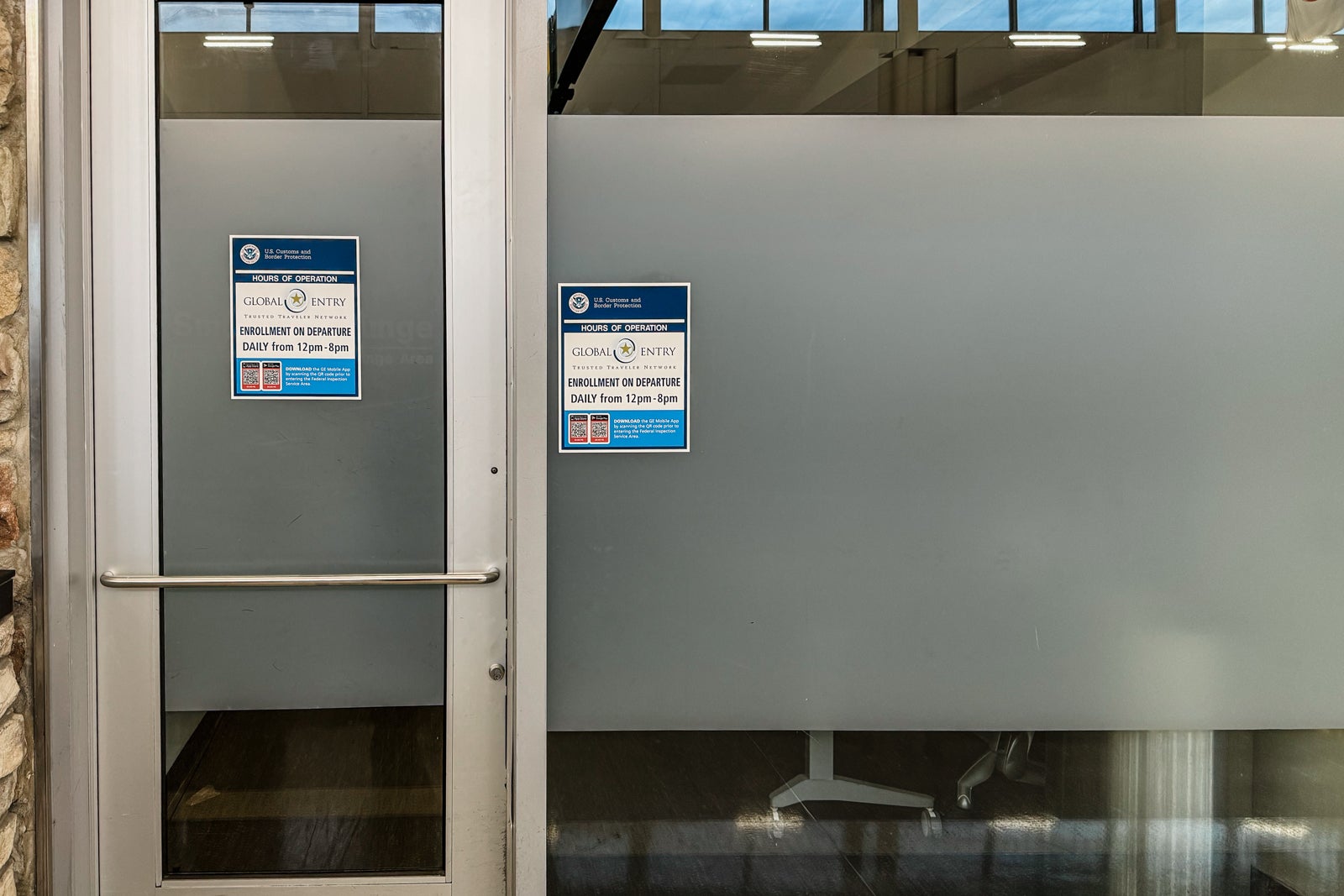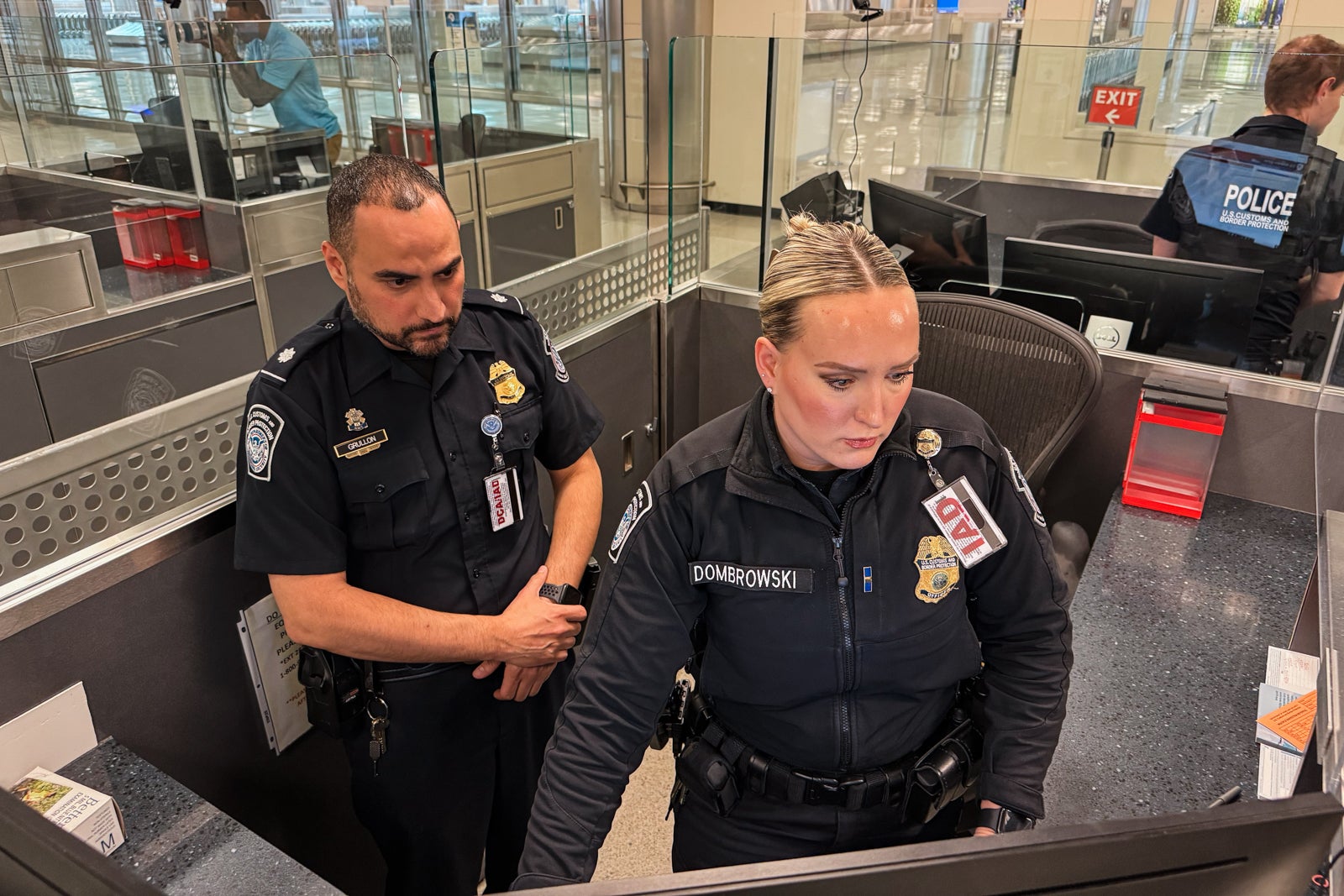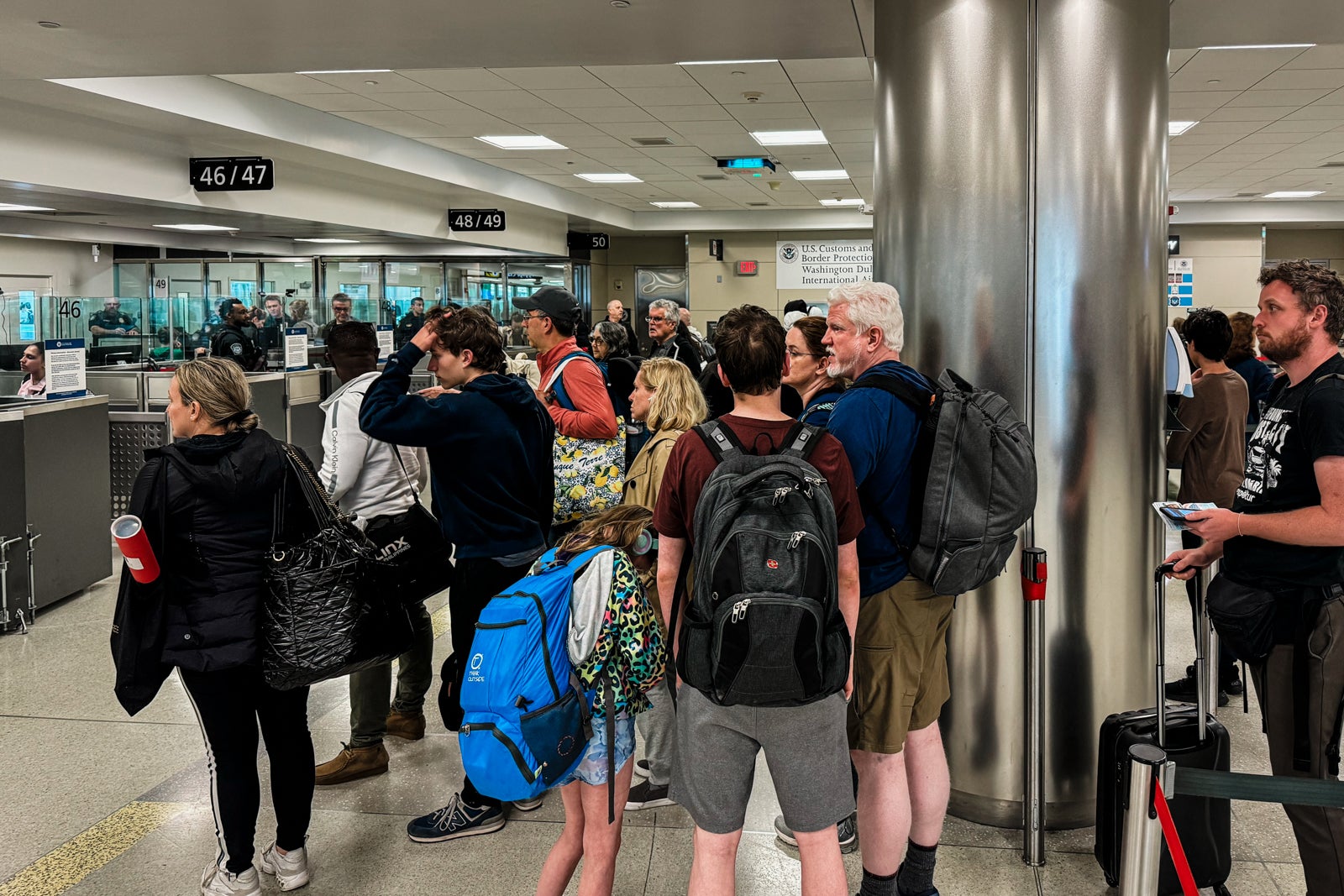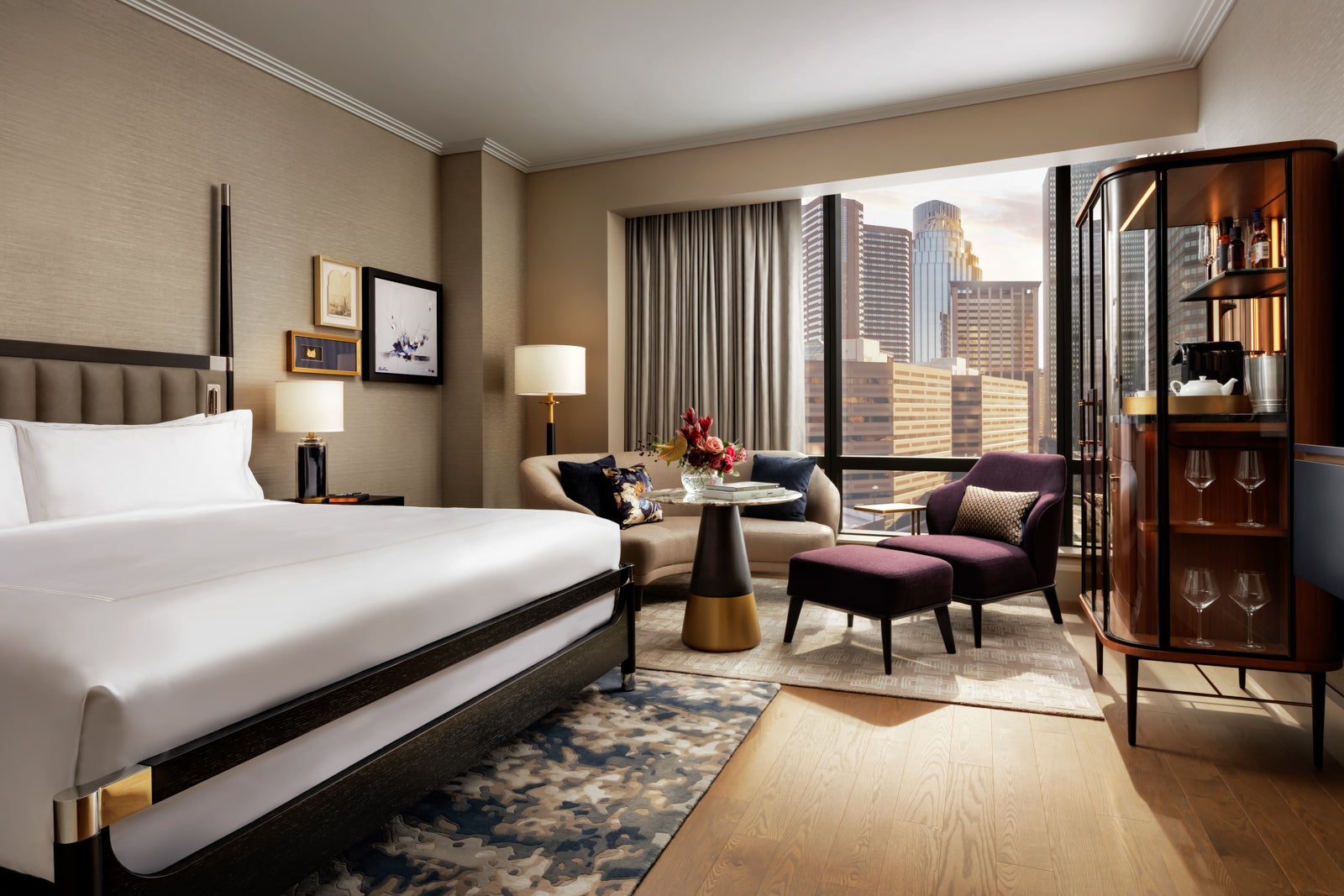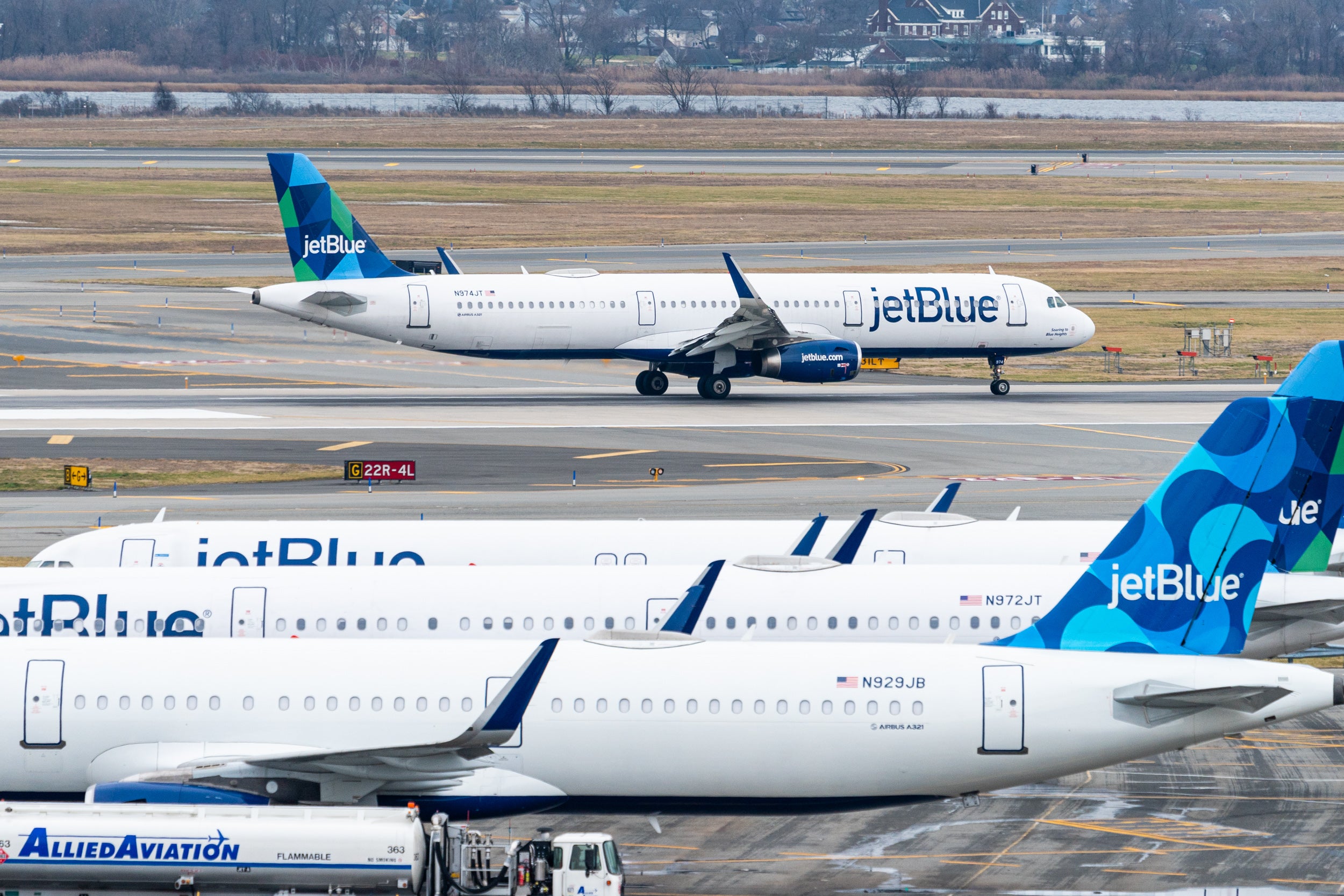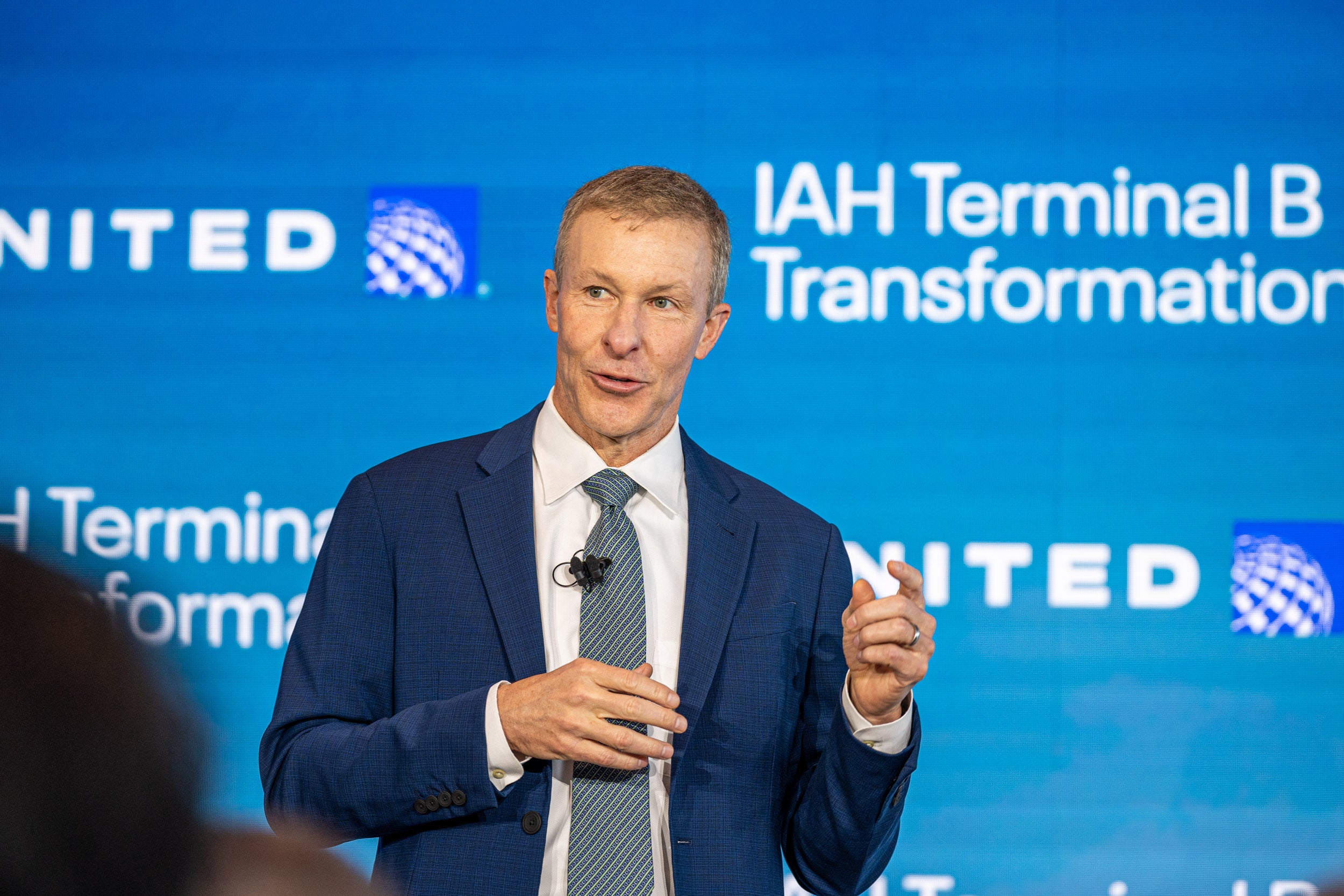Global Entry interview wait times are improving, CBP says
Four years after the coronavirus pandemic first spawned delays in Global Entry application processing, U.S. Customs and Border Protection says wait times are improving. Yet, amid an unrelenting wave of demand for the program, the agency admits it’s still not satisfied.
The delays of recent years have been well-documented, dating back to when travel first began to surge in the wake of the pandemic slowdown.
Backlogs ensued in 2021 and 2022 as passengers whose Global Entry membership lapsed during the down days of travel applied en masse for renewal; others applied for first-time membership as part of the so-called “revenge travel” craze.
Want more aviation news? Sign up for TPG’s free biweekly Aviation newsletter.
Then, as the agency began to clear its application backlog after the pandemic’s peak, unprecedented demand for the program made matters infinitely more complicated.
That historic crush of applications continues now. In fact, in early 2024, it has reached levels not seen in 2022 or even 2023, TPG has learned.
Long waits unacceptable, CBP admits
Here’s the good news: If you apply for Global Entry now, you’re likely to find wait times — for both conditional approval and an interview — are far better than they were one or two years ago, the agency tells TPG.
At least, that’s true for most applicants, the agency says.
Still, log onto the Trusted Traveler Programs website, and you’ll still see somewhat jarring estimated wait times listed for Global Entry application processing: four to six months.

Daily Newsletter
Reward your inbox with the TPG Daily newsletter
Join over 700,000 readers for breaking news, in-depth guides and exclusive deals from TPG’s experts
One of the program’s top leaders admitted to TPG this week that solutions the agency has deployed to alleviate the delays still haven’t gone far enough — despite the progress.
“We have work to go,” Brendan Blackmer, CBP branch chief in charge of Trusted Traveler Programs, said.
Speaking to TPG inside the customs hall at Dulles International Airport (IAD), watching passengers race through the program’s time-saving kiosks, Blackmer was candid — and sympathetic — regarding the frustration travelers have encountered in recent years.
“If you apply for the program and you pay the government $100,” Blackmer said. “You shouldn’t be waiting six months, nine months, a year to get that benefit.”
Historic demand for Global Entry
To the extent there are lingering challenges with the Global Entry application process, it now has less to do with the pandemic and more to do with the sheer number of people who want to be a Global Entry member.
Here’s a little perspective: Prior to the pandemic, the program was soaring to new heights. In 2019, CBP saw a then-record 3.2 million applications for all Trusted Traveler Programs. (Programs include SENTRI and Nexus which are smaller and less comprehensive programs geared toward frequent travelers between the U.S. and Canada and/or Mexico. Global Entry is by far the largest of those programs.)
The daily wave of applications, even in 2019, was becoming a bit jarring.
“Pre-COVID, summer peak, we were talking 10,000 or 11,000 [applications] per day. That was like, ‘Whoa!'” Blackmer said.
It pales in comparison to what the agency has seen more recently.
“That’s now the low days,” Blackmer said.
Indeed: On peak days in 2023, the agency saw application volume top 17,000 or 18,000 daily.
2024 has been even busier.
“We had a period in February — we had two weeks steady — where it was over 20,000 [applications] a day,” Blackmer said, noting the early months of the year are often the slowest.
After fielding a record 4.1 million Trusted Traveler applications last year, CBP is on pace to hit close to 5 million this year.
Suffice it to say, it’s keeping agents busy.
How to get a quicker appointment for Global Entry interview?
Despite the unrelenting demand, CBP is reporting progress.
Nowadays, 80% of Global Entry applicants eligible for conditional approval receive it within two weeks, the agency says.
That means four in five eligible applicants are cleared to schedule an interview, often within days.
To be fair, though, that conditional approval is only a stepping stone to what’s been at least an equally frustrating hangup in the process in recent years: finding an interview slot with a CBP officer.
CBP insists it’s made progress on that front, too.
More interview slots open
Over the next 90 days, CBP has 150,000 interview slots open nationwide, Blackmer said. That’s three, four or five times more appointments than it had at any given point a couple of years ago, he added.
“If you go to Miami, even Los Angeles, New York right now — areas that traditionally were very hard, there’s tons of appointments available,” Blackmer said. He noted some areas remain a challenge (California’s Bay Area and San Diego are two that come to mind, as well as smaller communities).
Talk to travelers in our TPG Lounge on Facebook, and you’ll find a mixed bag of traveler experiences — though that’s better than we could have said in 2022.
“I received conditional approval overnight. My husband’s took about three days,” Brenda McKee of North Carolina said. “[We made an] appointment for two weeks from now.”
Another traveler, Kerry Bryan of New England, didn’t fare as well.
“My husband and I were conditionally approved in 24 hours,” she said. “Boston’s Logan Airport is our closest location, but they didn’t have any interview dates.” They ended up finding a slot while traveling in Fort Lauderdale.
To combat lingering challenges, CBP has gotten more creative in recent months.
Set a reminder for first Monday of the month
The agency has switched up its appointment strategy, releasing large sums of interview slots at 9 a.m. on the first Monday of the month. So, if you’re in search of a slot, set a reminder on your phone.
Keep an eye on the agency’s social media channels as well. CBP is periodically going into parts of the country where appointments are scarce and holding large-scale appointment blitzes where tons of applicants can reserve a slot.
Enrollment on Arrival
Enrollment on Arrival remains perhaps the best option for conditionally approved travelers awaiting an interview. At dozens of airports nationwide, you can complete your interview after an international flight while passing through customs.
Still a relatively unknown option for many applicants, CBP officers are now empowered to suggest the option to travelers when they notice — during the course of a standard trip through customs — that a passenger has been conditionally approved for the program but has not yet landed an interview.
TPG reader Kathy Lynn reported this happened to her at New York’s John F. Kennedy International Airport (JFK).
“I received my conditional approval within a week,” Hunt said. “Two weeks later, I was traveling back from Zurich through JFK and the re-entry guy said, ‘I see you are approved for Global Entry. You can go right over there and do the interview.’ It was within sight, no line, and I was done in five minutes.”
Enrollment on Departure
TPG reported in February that the agency also rolled out a new program that it’s trialing at Dulles: Enrollment on Departure. With this program, conditionally approved passengers departing the airport can conduct their interview before an international flight.
If all goes well, they’ll get their approval while overseas and be all set to visit the Global Entry kiosks on their trip home.
About 50 travelers daily are taking advantage of the option along the airport’s B Concourse, Dulles port director Marc Calixte said.
Travelers at a few more airports might see the option soon, too, TPG has learned.
“There’s one on the West Coast that has expressed interest,” Blackmer said. “So, probably in the short term, you’re definitely going to see more of it.”
Enroll in Global Entry at a cruise port
CBP has even opened up an enrollment center for cruisegoers at the Port of Miami (even though Global Entry generally won’t help cruisegoers).
Do I need to interview if I’m renewing Global Entry?
The agency has also worked to remove hurdles for travelers (and agents) when it comes to Global Entry renewals, shifting mostly to online-only processes. Of the members renewing in 2023 (myself included), 96% did not have to submit to a second interview, freeing up space at enrollment centers.
“We’ve done a lot to focus just on those that are going in for their interview for the first time, or [for whom] there’s a concern,” Blackmer said. “Our focus has been on getting resources for that 20% where we kind of need to do a deeper dive.”
Planning for the future
In responding to the historic demand, CBP is hoping to hire more officers to field applications and handle interviews. That surely factored into the agency’s announcement this week that it would hike enrollment costs for the long-standing Global Entry application fee.
Starting in October, a five-year membership will cost $120 instead of $100. However, there was a welcome change, too: Children of applicants or members can apply for free.
Plus, several travel cards currently reimburse the $100 application fee. (It remains to be seen whether any issuers will increase the Global Entry benefit to account for the fee hike.)
Further Global Entry growth expected
Ultimately, CBP hopes to continue growing the program’s membership. Having a higher portion of so-called trusted travelers means the officers can focus more of their time and attention on passengers with whom the U.S. government is less familiar (as opposed to a Global Entry member that’s been thoroughly vetted).
Last year, about 10% of all passengers arriving from international flights at airports with Global Entry were program members. At some larger airports, that number trended closer to 17%, and the agency is aiming for around 20%.
It’s worth noting that while enrolling and interviewing have had their share of delays in recent years, the Global Entry experience itself has only gotten more efficient and convenient. The agency has numerous innovations planned for the program in the coming years, too.
“If you can get 20% of the arrivals through one or two lanes with minimum interactions by the individual, not only are they having a better experience but all the other travelers who now have more officers to focus on them — they’re going to have a better experience,” Blackmer said. “There’s a lot of interest in improving that customer experience all the way up to the White House.”
Related reading:

